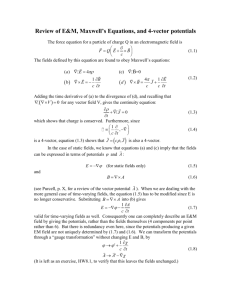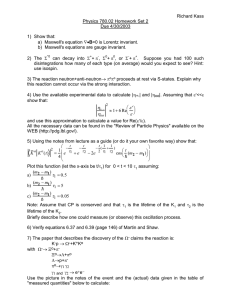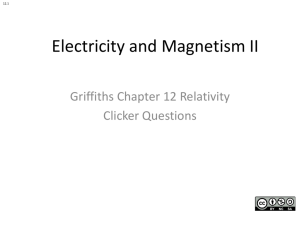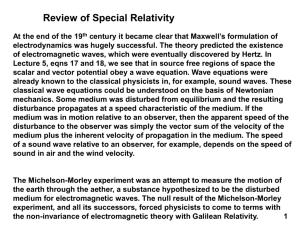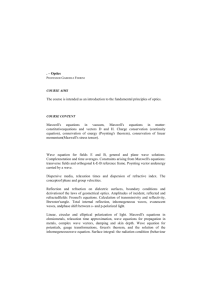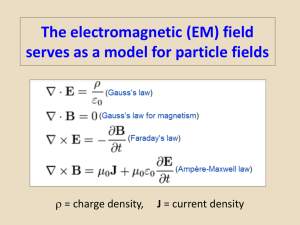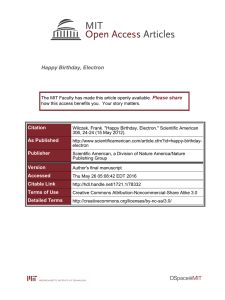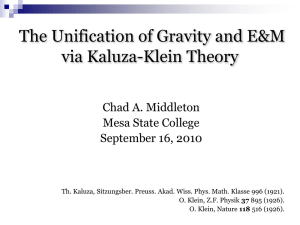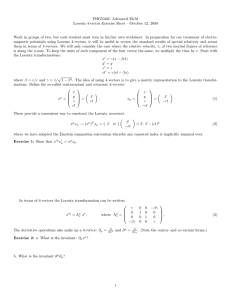Maxwell`s Eqns & Lorentz Invariance
advertisement
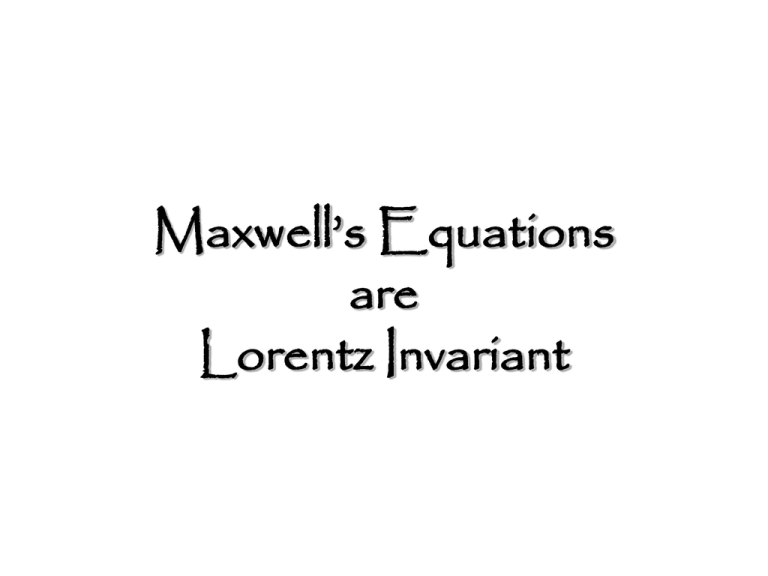
Maxwell’s Equations are Lorentz Invariant Maxwell’s Equations B 0 E B 0 t E B E j t Charge current obeys continuity eqn. E B 0 E B 0 t B E j t E B E j t t j t charge density current density ( u ) 0 t continuity equation, or charge conservation Charge current 4-vector E B 0 E B 0 t j t B E j t jx jy jz 0 t x y z Define charge current 4-vector J ( , j ) ( , jx , j y , jz ) Divergence operator is invariant under Lorentz transformations x J 0 E&M potentials B 0 E B 0 t E B E j t Define scalar and vector potentials, and A. B A this works because ( A) 0 E A this works because t [ E A ] B 0 and ( ) 0 t t The Lorenz condition E B 0 E B 0 t How are and A Lorenz condition: A t B E j t related? Ax Ay Az 0 t x y z Define potential 4-vector ( , A) ( , Ax , Ay , Az ) Its divergence is Lorentz invariant x 0 Wave equation for B 0 E B 0 t E B E j t Use the first inhomogeneous eqn to show that obeys the wave equation, travelling at c. [ E A t A t ] 1 2 2 2 2 c t Wave equation for A B 0 E B 0 t E B E j t Use the second inhomogeneous eqn to show that A obeys the wave equation, travelling at c. B E j t B A A 0 t 1 A 2 2 A j 2 c t 2 Maxwell’s equations in Lorentz invariant form E B 0 E B 0 t 2 t 2 ( 2 2 t 2 B E j t A 2 t 2 2 ) A j 2 J Maxwell’s Equations E B 0 E B 0 t Used Used Used B E j t and j to make a charge current 4-vector, J E and B to make a scalar and vector potentials, and A and A to make a 4-potential, ( 2 t 2 ) 2 J
